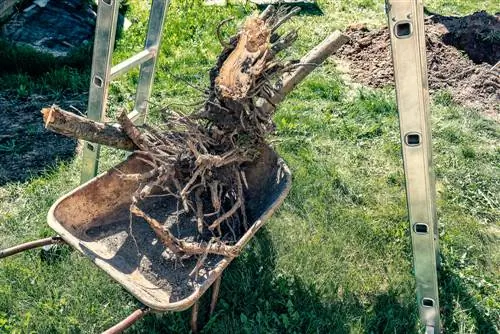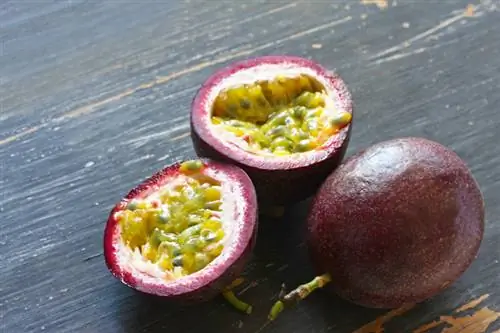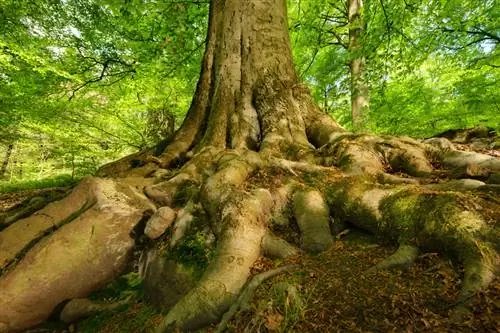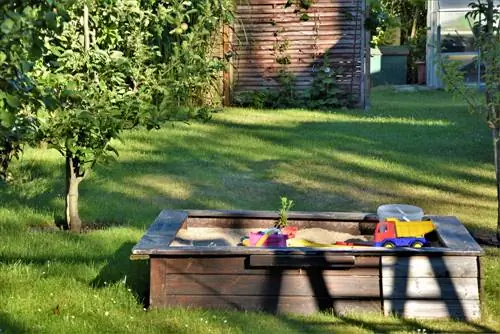- Author admin [email protected].
- Public 2023-12-16 16:46.
- Last modified 2025-01-23 11:21.
The expected root depth is important information that has a lot of influence on the right location and the optimal soil conditions. Deep-rooted fruit trees, for example, should be planted in deeply loosened, uncompacted soil - and not necessarily directly above an underground water pipe. Shallow roots, on the other hand, need a lot of space across the width - and should not necessarily be placed in front of a wall or other structure. Under certain circumstances, their spreading roots could damage it.
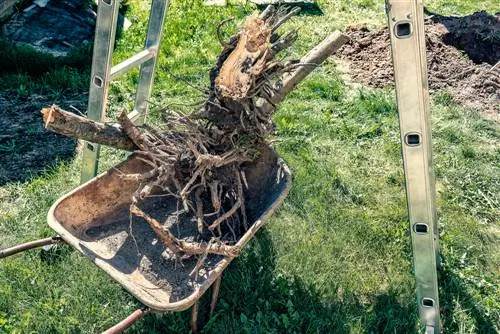
Which fruit trees are deep-rooted?
The deep-rooted fruit trees primarily include nut fruits such as walnuts and hazel, chestnuts and pears. These can develop deep roots, depending on the nature of the soil and environmental conditions.
Root depth depends on various factors
However, the expected root depth does not only depend on the type and variety of fruit, as the root system can certainly adapt to existing conditions. Trees only have really deep roots when they absolutely have to - for example because the subsoil is sandy, dry and poor in nutrients. In this case, the tree will try to stretch its roots deeper to get the water and nutrients it needs. Conversely, the roots of even deep-rooted plants remain on the surface if the soil is compacted or simply too wet - the tree tries to avoid this by developing an atypical root system. Even a solitary tree often has deeper roots than the trees in a group planting.
Typical root systems of popular fruit species
In addition to the factors already listed that influence root depth, there is another point that significantly determines the development of the root system: the substrate. All fruit trees are usually grafted, with the rootstock forming the roots and thus determining how deep they reach. However, the grafted noble variety has no influence on this, which is why you should always know the rootstock and its root system. Only then can the fruit tree receive an optimal environment through planting. The following classification shows you which root type many popular fruit species usually belong to - unless they have been grafted onto a different rooting base.
Shallow-rooted
Most types of fruit - both tree and bush fruits - are shallow-rooted. These include, for example, apples, cherries, hazelnuts (shrubs) as well as currants, gooseberries, blackberries and raspberries.
Deep-rooted and heart-rooted
Deep-rooted plants can form a taproot, but do not always have to. Heartroots, on the other hand, are plants that form a very compact, deep rootstock. This group includes, for example, nut fruits such as walnuts and hazel, chestnuts and pears.
Tip
Shallow-rooted fruit trees in particular should be secured with a stake when planting so that they are not knocked over in the next storm.

